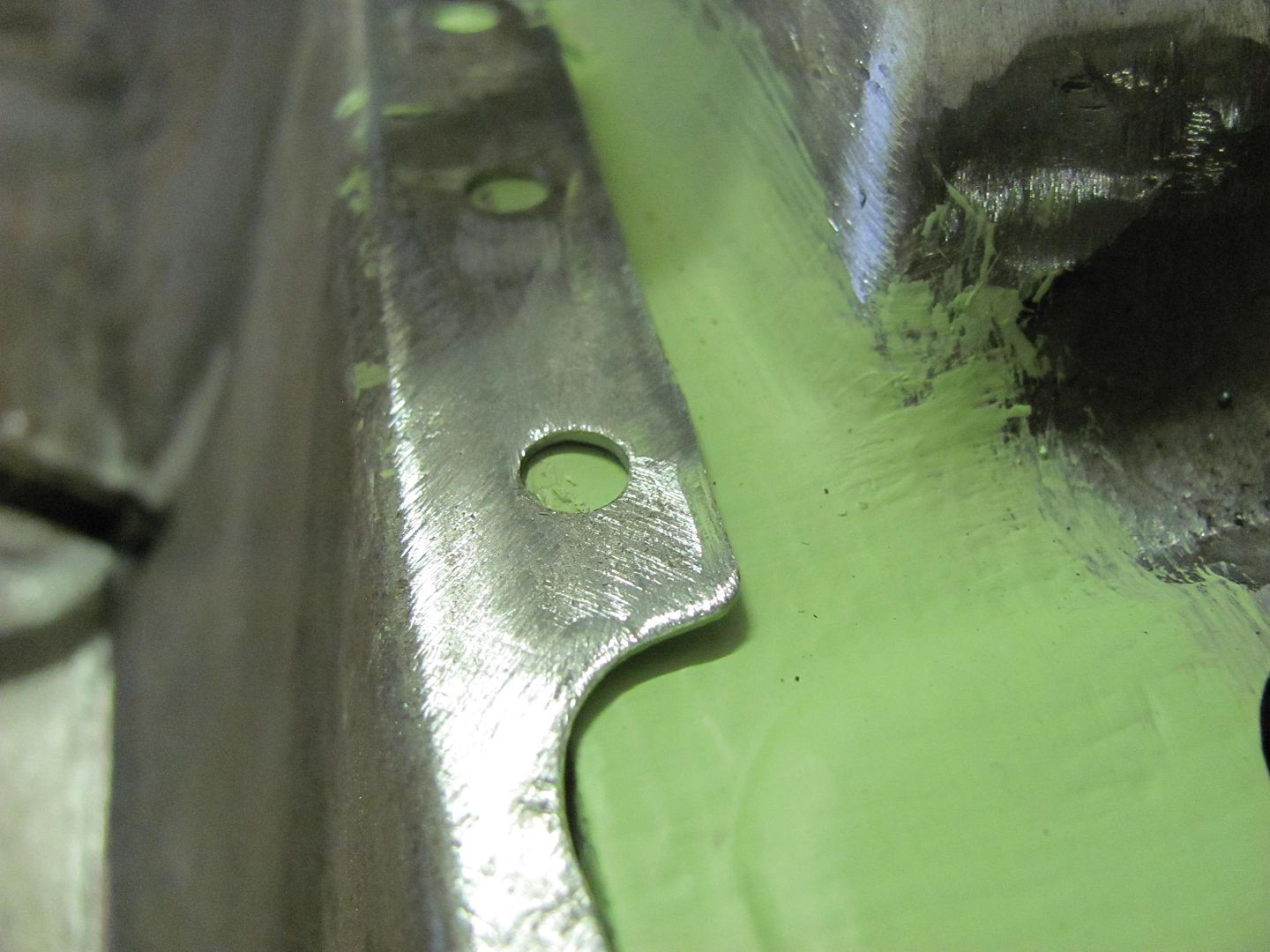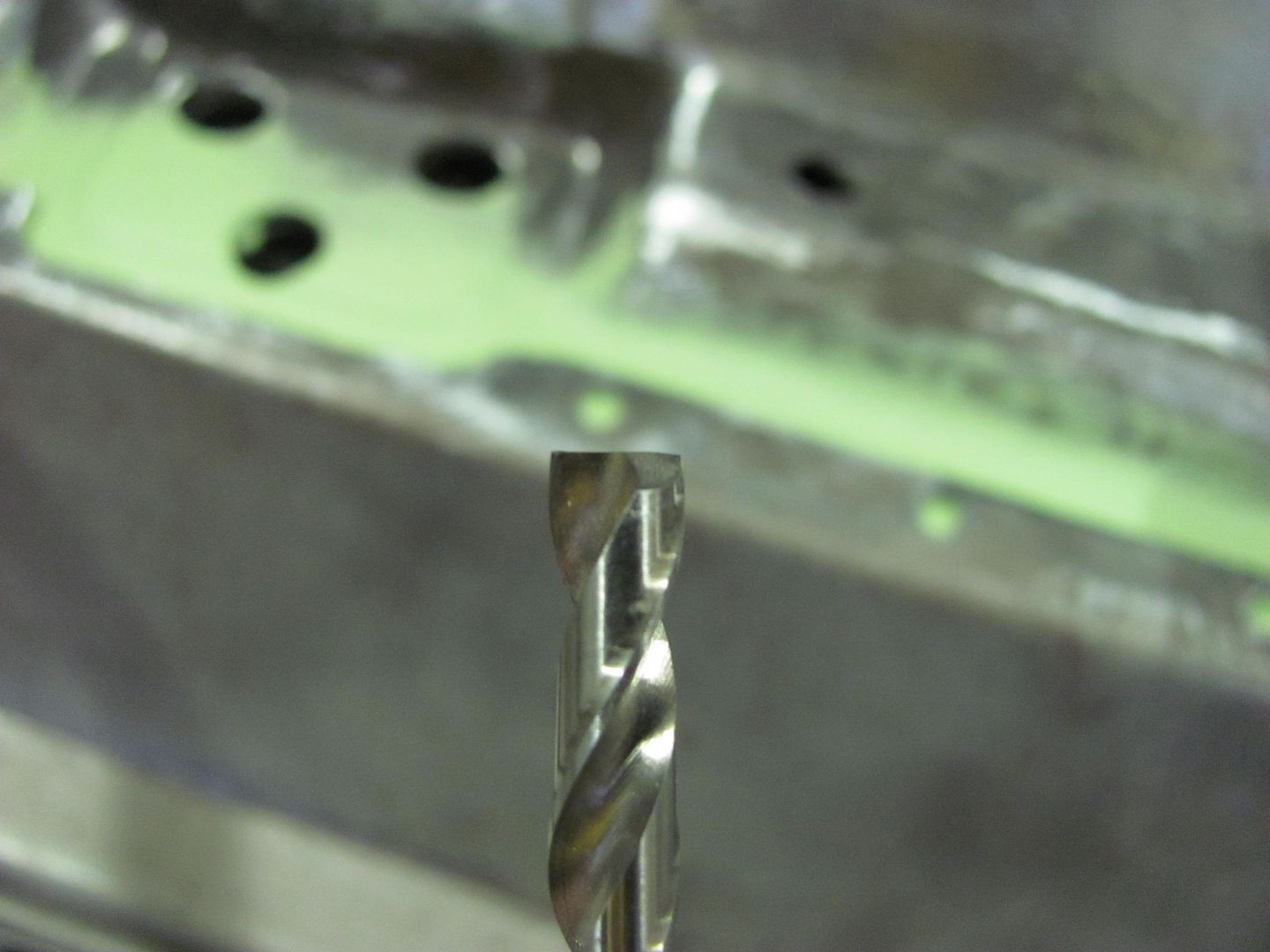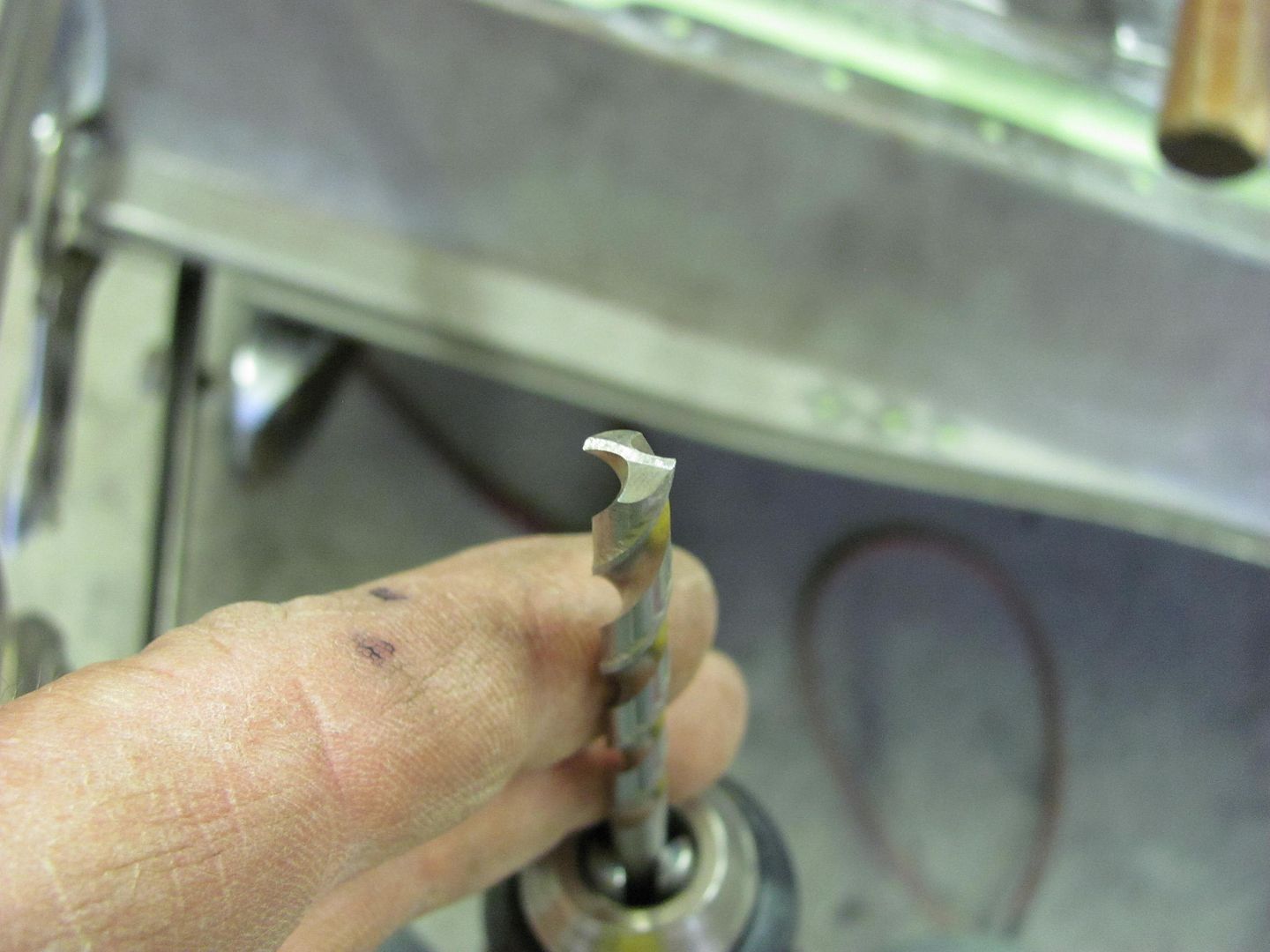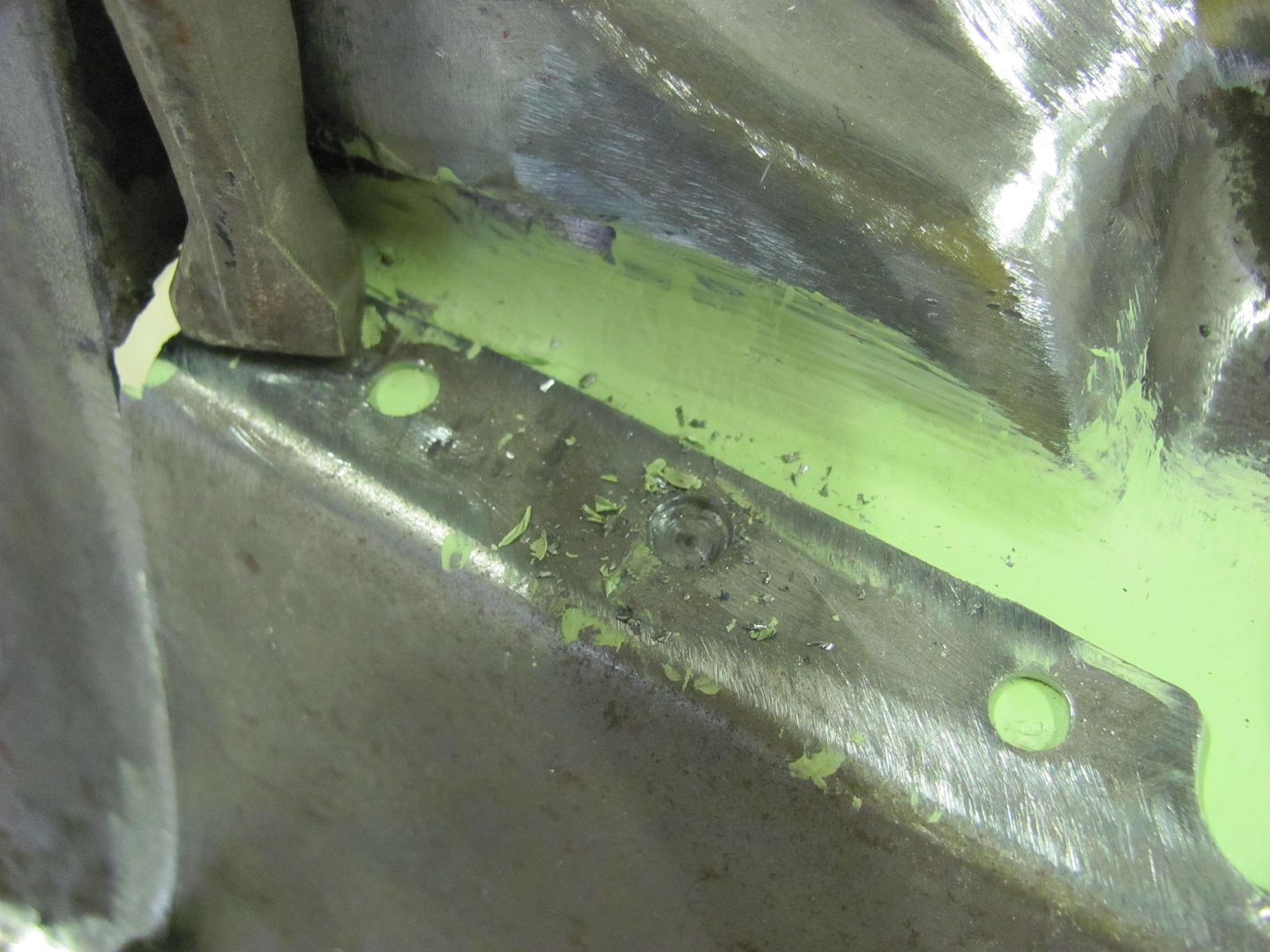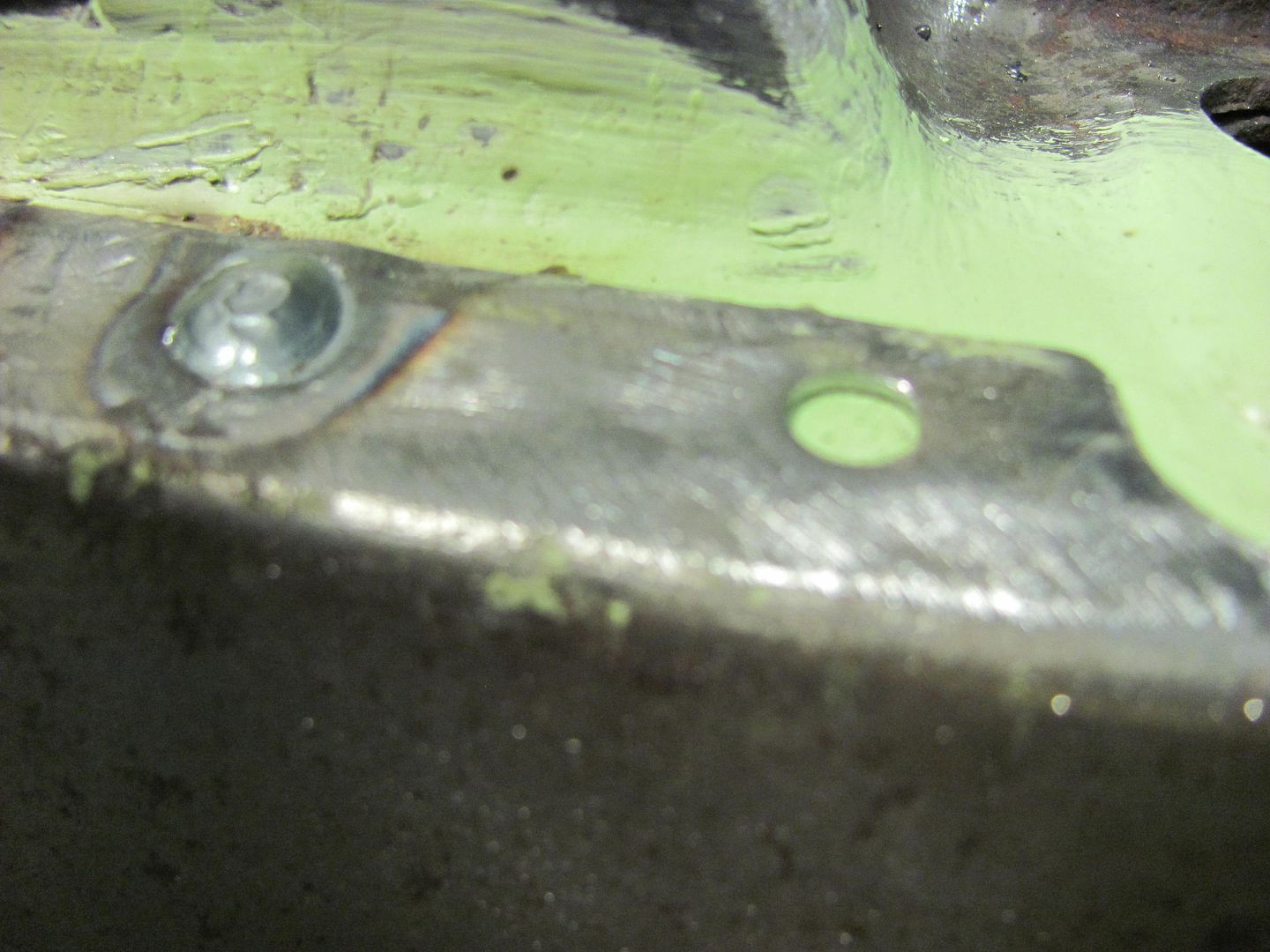When assembling adjacent panels I'll typically just use epoxy between the two, as shown here, painted on the rear tailgate opening, and also on the underside of the tailpan. This provides rust protection where in many cases the factory process does not add any paint until after assembly. In cars like this 55, in many cases the inner voids such as in the rockers or floor crossmembers never receive any paint finish inside, making them prone to moisture and rust issues.
Where this epoxy will not allow welding, you will need to clean the paint off the adjacent panel within the drilled plug weld hole.
Which is what brought about the need for this tool, the same size drill bit I used for plug weld holes is flattened and backfaced to resemble an end mill cutter.
This shows how it works, cleans the paint from the metal surface, but having a flat face on the cutter, it doesn't affect the metal as a regular drill bit would. Notice most of the "chips" are paint....
And welded......
Some guys will use a weld through primer to accomplish this same process, I prefer the epoxy as I read an issue of Auto Restorer magazine quite a few years back that a study showed epoxy offered better long term protection from rust. I'd say use either method, as something, no matter whether you choose weld through or epoxy, will be better than nothing at all.
For application, I spray inside my paint booth. For a small application like you see here, I'll mix up some epoxy and brush it on. (note brush strokes in first pic above) Again, the application process won't matter much as any exposed epoxy will be sanded and re-applied later, but now that we have some epoxy between the two panels, there is better rust protection regardless of how it got there.

